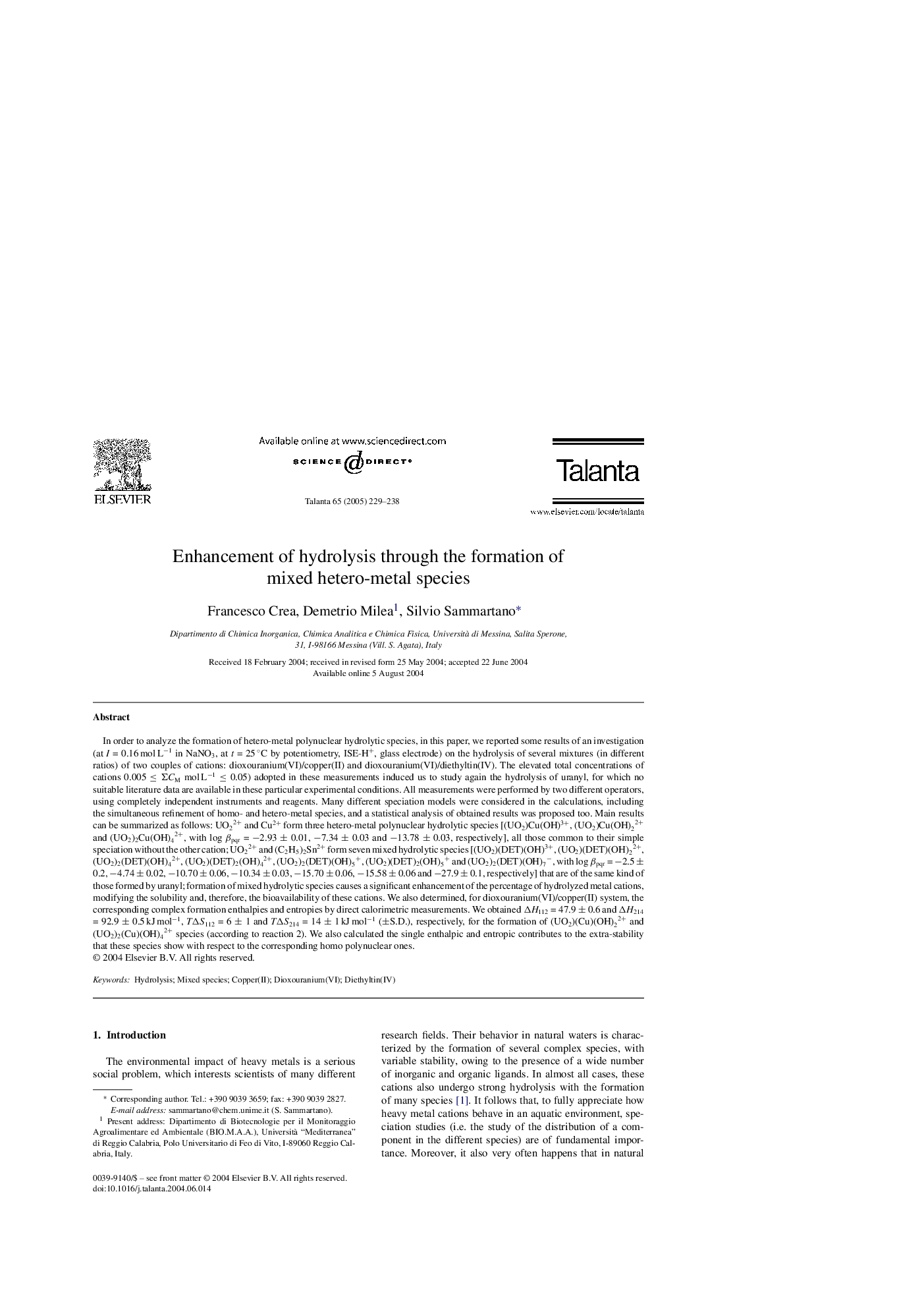| Article ID | Journal | Published Year | Pages | File Type |
|---|---|---|---|---|
| 10560228 | Talanta | 2005 | 10 Pages |
Abstract
In order to analyze the formation of hetero-metal polynuclear hydrolytic species, in this paper, we reported some results of an investigation (at I = 0.16 mol Lâ1 in NaNO3, at t = 25 °C by potentiometry, ISE-H+, glass electrode) on the hydrolysis of several mixtures (in different ratios) of two couples of cations: dioxouranium(VI)/copper(II) and dioxouranium(VI)/diethyltin(IV). The elevated total concentrations of cations 0.005 ⤠ΣCM mol Lâ1 ⤠0.05) adopted in these measurements induced us to study again the hydrolysis of uranyl, for which no suitable literature data are available in these particular experimental conditions. All measurements were performed by two different operators, using completely independent instruments and reagents. Many different speciation models were considered in the calculations, including the simultaneous refinement of homo- and hetero-metal species, and a statistical analysis of obtained results was proposed too. Main results can be summarized as follows: UO22+ and Cu2+ form three hetero-metal polynuclear hydrolytic species [(UO2)Cu(OH)3+, (UO2)Cu(OH)22+ and (UO2)2Cu(OH)42+, with log βpqr = â2.93 ± 0.01, â7.34 ± 0.03 and â13.78 ± 0.03, respectively], all those common to their simple speciation without the other cation; UO22+ and (C2H5)2Sn2+ form seven mixed hydrolytic species [(UO2)(DET)(OH)3+, (UO2)(DET)(OH)22+, (UO2)2(DET)(OH)42+, (UO2)(DET)2(OH)42+, (UO2)2(DET)(OH)5+, (UO2)(DET)2(OH)5+ and (UO2)2(DET)(OH)7â, with log βpqr = â2.5 ± 0.2, â4.74 ± 0.02, â10.70 ± 0.06, â10.34 ± 0.03, â15.70 ± 0.06, â15.58 ± 0.06 and â27.9 ± 0.1, respectively] that are of the same kind of those formed by uranyl; formation of mixed hydrolytic species causes a significant enhancement of the percentage of hydrolyzed metal cations, modifying the solubility and, therefore, the bioavailability of these cations. We also determined, for dioxouranium(VI)/copper(II) system, the corresponding complex formation enthalpies and entropies by direct calorimetric measurements. We obtained ÎH112 = 47.9 ± 0.6 and ÎH214 = 92.9 ± 0.5 kJ molâ1, TÎS112 = 6 ± 1 and TÎS214 = 14 ± 1 kJ molâ1 (±S.D.), respectively, for the formation of (UO2)(Cu)(OH)22+ and (UO2)2(Cu)(OH)42+ species (according to reaction 2). We also calculated the single enthalpic and entropic contributes to the extra-stability that these species show with respect to the corresponding homo polynuclear ones.
Related Topics
Physical Sciences and Engineering
Chemistry
Analytical Chemistry
Authors
Francesco Crea, Demetrio Milea, Silvio Sammartano,
